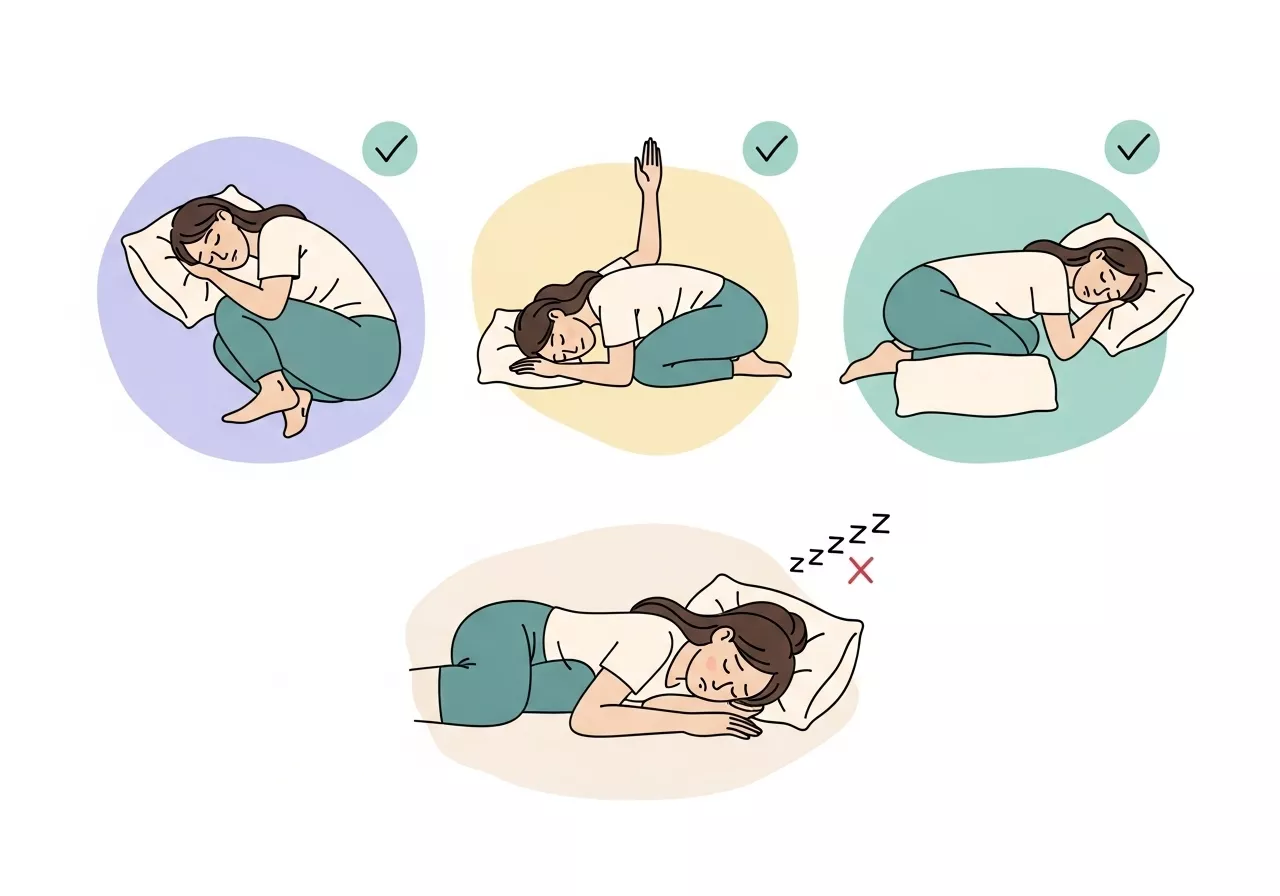While yoga is celebrated for its benefits to physical and mental health, certain poses can pose risks if performed incorrectly or without proper preparation.
These risks increase for beginners, individuals with specific health conditions, or those pushing their bodies beyond their limits.
It’s essential to approach these poses mindfully, with attention to alignment, modifications, and your body’s unique capabilities.
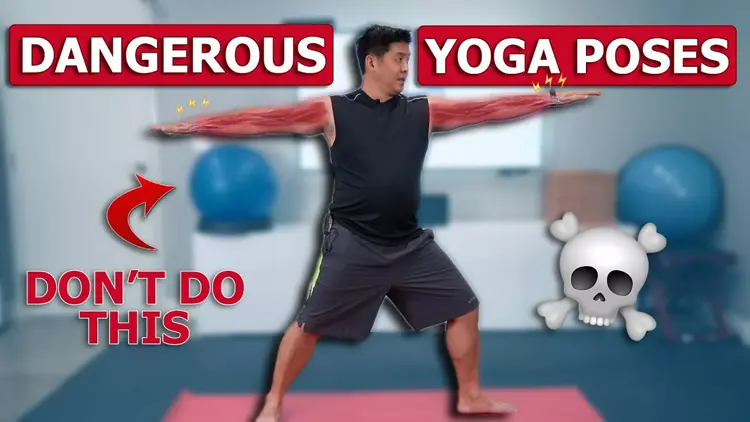
Here’s a detailed look at potentially harmful yoga poses and how to practice them safely.
1. Headstand (Sirsasana)
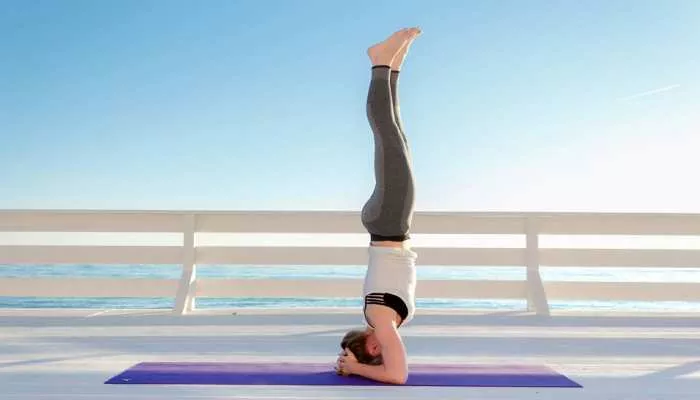
Why It Can Be Harmful:
Headstands place significant pressure on the neck and spine. Without proper alignment or strength, the risk of neck injuries or compression is high.
Beginners are particularly vulnerable if they lack the shoulder and core strength needed to stabilize the pose.
How to Practice Safely:
- Build strength in your shoulders, arms, and core with preparatory poses like Dolphin Pose.
- Practice against a wall for support until you’re confident in your balance.
- Avoid if you have neck issues, high blood pressure, or glaucoma.
2. Shoulder Stand (Sarvangasana)
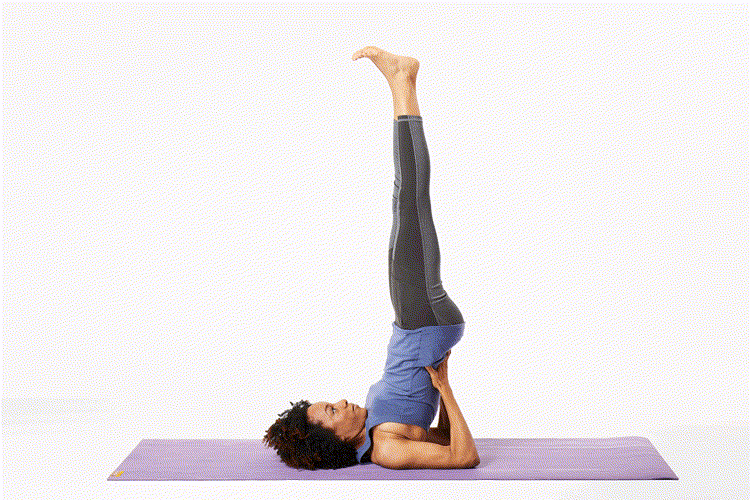
Why It Can Be Harmful:
Similar to the Headstand, Shoulder Stand places intense pressure on the neck. Misalignment can lead to strain or injury in the cervical spine.
Additionally, this pose is risky for those with thyroid issues, heart problems, or eye conditions.
How to Practice Safely:
- Use a folded blanket under your shoulders to reduce pressure on the neck.
- Focus on engaging your core and maintaining a straight line from your shoulders to your feet.
- Avoid if you feel any discomfort or have pre-existing neck issues.
3. Plow Pose (Halasana)

Why It Can Be Harmful:
Plow Pose stretches the neck and spine intensely, and improper alignment can lead to neck strain or even disc compression.
The pose also places pressure on the chest, which can be uncomfortable or unsafe for some individuals.
How to Practice Safely:
- Use props like a bolster or blocks to support your legs and reduce the stretch.
- Avoid forcing your legs to touch the ground behind you.
- Skip this pose if you have neck injuries, spinal issues, or are pregnant.
4. Full Wheel Pose (Urdhva Dhanurasana)
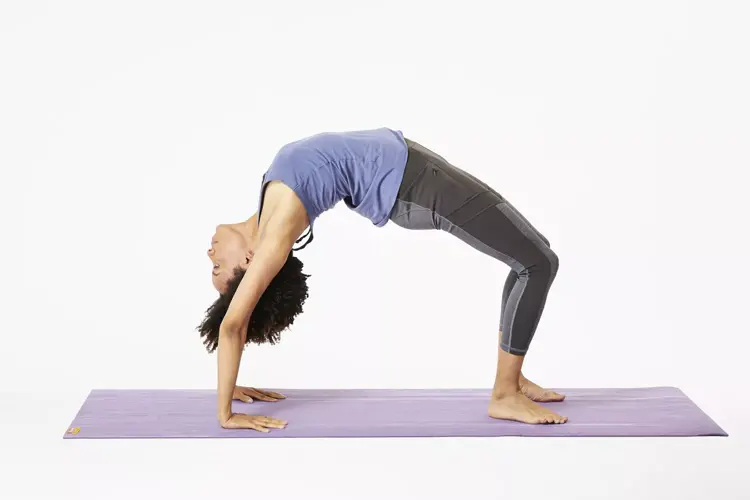
Why It Can Be Harmful:
This deep backbend requires significant strength and flexibility in the spine, shoulders, and wrists.
Without proper preparation, it can strain the lower back, compress the spine, or cause wrist injuries.
How to Practice Safely:
- Warm up with gentle backbends like Bridge Pose or Cobra Pose before attempting Full Wheel.
- Avoid if you have lower back pain, shoulder injuries, or carpal tunnel syndrome.
- Focus on engaging your core to protect your spine.
5. Lotus Pose (Padmasana)
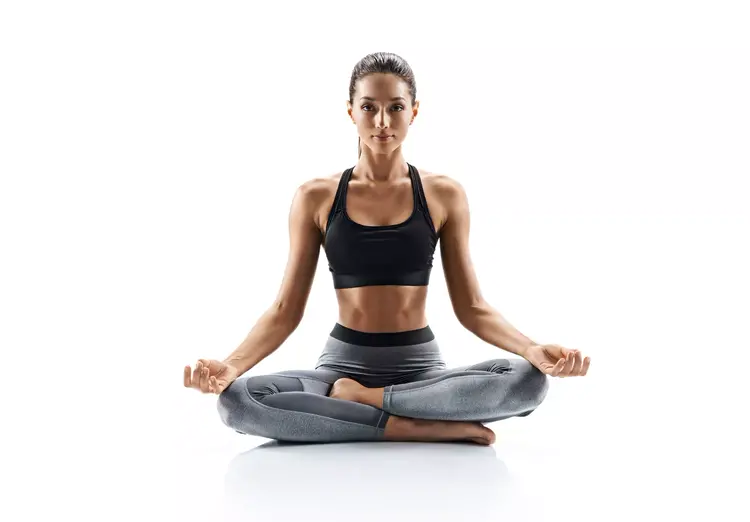
Why It Can Be Harmful:
Lotus Pose places intense stress on the knees and hips, especially for individuals with tight hips or limited flexibility.
Forcing the legs into position can lead to knee injuries or joint strain.
How to Practice Safely:
- Use modifications like Half Lotus (Ardha Padmasana) or Sukhasana (Easy Pose) to build hip flexibility.
- Avoid this pose if you have knee or hip pain.
- Focus on externally rotating your hips rather than pushing your knees downward.
6. Standing Forward Bend (Uttanasana)
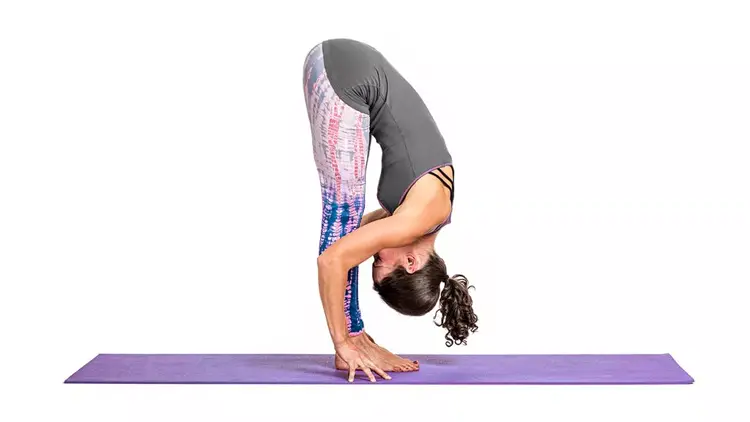
Why It Can Be Harmful:
This seemingly simple pose can strain the lower back and hamstrings if performed without proper alignment.
Rounding the back excessively can lead to discomfort or even injury over time.
How to Practice Safely:
- Keep a slight bend in your knees to avoid overstretching your hamstrings.
- Hinge at your hips instead of rounding your back.
- Use blocks under your hands for support if you can’t reach the floor.
7. Crow Pose (Bakasana)
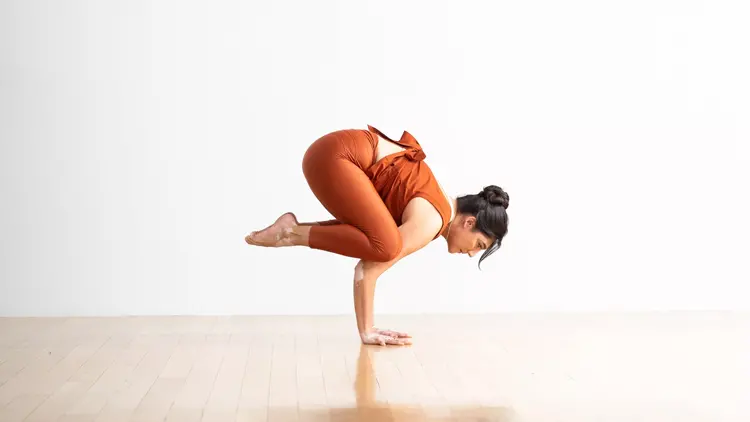
Why It Can Be Harmful:
Crow Pose is a challenging arm balance that requires strength, coordination, and wrist stability.
Falling out of the pose can lead to wrist injuries or bruising from a hard landing.
How to Practice Safely:
- Begin with a modified version by resting your toes lightly on the ground.
- Place a cushion or blanket in front of you to soften potential falls.
- Strengthen your arms and core with preparatory poses like Plank Pose or Chaturanga.
8. Camel Pose (Ustrasana)

Why It Can Be Harmful:
Camel Pose is a deep backbend that can compress the lower back if not done with proper alignment.
Leaning back too far or without engaging the core can lead to strain or injury.
How to Practice Safely:
- Place your hands on your lower back for support if you’re new to the pose.
- Focus on lifting through your chest rather than collapsing into your lower back.
- Avoid if you have a history of back pain or spinal issues.
9. Seated Forward Bend (Paschimottanasana)
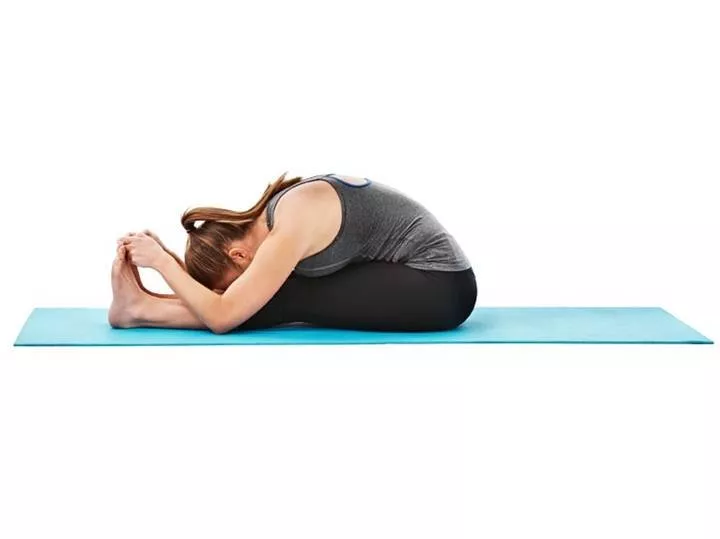
Why It Can Be Harmful:
Pushing too hard in this pose can overstretch the hamstrings and lower back. Excessive rounding of the spine can also lead to discomfort or long-term strain.
How to Practice Safely:
- Sit on a folded blanket or bolster to elevate your hips and reduce strain on your back.
- Keep your knees slightly bent if your hamstrings are tight.
- Focus on lengthening your spine rather than forcing your torso forward.
General Tips for Safe Yoga Practice
Yoga is a transformative practice that enhances flexibility, strength, and mindfulness. However, like any physical activity, it comes with the risk of injury if not approached mindfully.
Whether you’re a beginner or an experienced practitioner, it’s essential to follow best practices to prevent injuries and ensure a safe and enjoyable yoga experience.
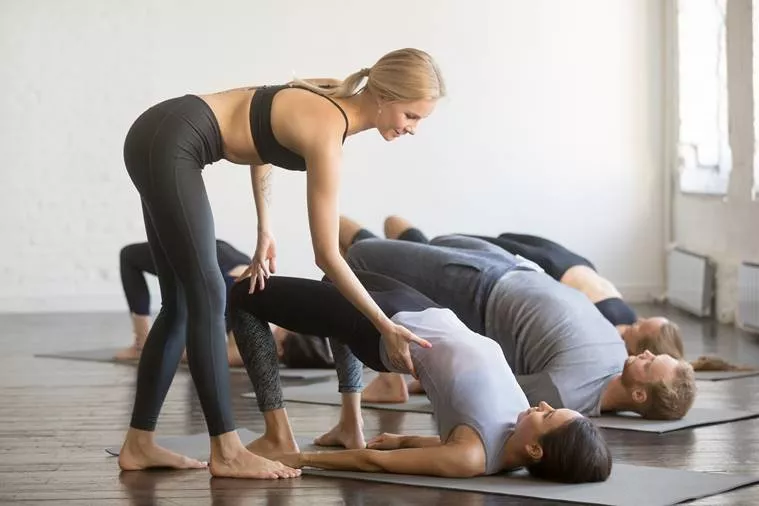
Below is a detailed guide on how to avoid yoga injuries:
1. Warm Up Properly
Why It Matters:
Jumping straight into challenging poses without warming up can strain cold muscles and increase the risk of injuries, especially in areas like the hamstrings, shoulders, and spine.
How to Do It:
- Start with gentle movements like Cat-Cow Pose (Marjaryasana-Bitilasana) or Child’s Pose (Balasana) to loosen the spine.
- Incorporate dynamic stretches like Sun Salutations (Surya Namaskar) to increase blood flow and prepare your body for more intense poses.
Pro Tip:
Spend at least 5–10 minutes warming up, focusing on the joints and muscles that will be most engaged in your practice.
2. Practice Proper Alignment
Why It Matters:
Misalignment in poses is a common cause of injuries, as it puts undue stress on joints, ligaments, and muscles.
Proper alignment ensures even weight distribution and reduces strain.
How to Do It:
- Focus on engaging the right muscles to support your poses, such as engaging your core during backbends.
- Use mirrors or work with an instructor to check your alignment.
- Adjust your posture to maintain a neutral spine and avoid overextending or locking joints.
Pro Tip:
If unsure about alignment, start with beginner-friendly classes where instructors provide detailed cues.
3. Know Your Limits
Why It Matters:
Overstretching or attempting advanced poses prematurely can lead to muscle tears, joint injuries, or chronic pain. Yoga is about progress, not perfection.
How to Do It:
- Listen to your body and stop if you feel pain, sharp discomfort, or excessive strain.
- Gradually build strength and flexibility before attempting advanced poses like Headstands or Splits.
- Avoid comparing yourself to others in class; every body is unique.
Pro Tip:
Remember that slight discomfort during stretching is okay, but pain is a signal to back off immediately.
4. Use Props and Modifications
Why It Matters:
Props like blocks, straps, and bolsters make poses more accessible, preventing overstretching or improper form.
Modifications allow you to practice poses safely, regardless of your skill level.
How to Do It:
- Use a block in poses like Triangle Pose (Trikonasana) to maintain proper alignment without straining.
- Employ a strap for poses like Seated Forward Bend (Paschimottanasana) to avoid forcing a deep stretch.
- Opt for modified versions of challenging poses, such as practicing Dolphin Pose instead of a full Headstand.
Pro Tip:
Props are not a sign of weakness—they are tools to help you grow in your practice while staying safe.
5. Focus on Breath Control
Why It Matters:
Holding your breath during challenging poses can create tension and reduce oxygen flow to your muscles, increasing the risk of strain or injury.
How to Do It:
- Synchronize your breath with your movements, inhaling during expansions and exhaling during contractions.
- Use deep, diaphragmatic breathing to stay calm and focused, even in challenging poses.
Pro Tip:
If your breath becomes erratic or shallow, it’s a sign to ease out of the pose and rest.
6. Avoid Over-Practicing
Why It Matters:
Practicing yoga too frequently or without adequate rest can lead to overuse injuries, such as tendonitis or muscle fatigue.
How to Do It:
- Limit intense yoga sessions to 3–4 times a week, allowing rest days for recovery.
- Alternate between high-intensity styles like Power Yoga and restorative practices like Yin Yoga.
- Pay attention to muscle soreness or fatigue and take breaks as needed.
Pro Tip:
Recovery is as important as practice. Use rest days for gentle stretching or meditation.
7. Wear the Right Clothing and Gear
Why It Matters:
Ill-fitting clothing or slippery mats can compromise your grip and stability, increasing the risk of falls or improper alignment.
How to Do It:
- Wear form-fitting, breathable clothing that allows for unrestricted movement.
- Invest in a high-quality, non-slip yoga mat to ensure stability during standing or balancing poses.
Pro Tip:
Replace worn-out mats and check for proper grip, especially for styles like Hot Yoga where sweating is common.
8. Work with a Certified Instructor
Why It Matters:
Instructors can provide personalized guidance, correct your alignment, and suggest modifications to prevent injuries.
How to Do It:
- Attend classes led by certified and experienced yoga teachers, particularly if you’re a beginner or trying advanced poses.
- Don’t hesitate to ask for adjustments or advice during class.
Pro Tip:
Inform your instructor about any injuries, medical conditions, or limitations before class so they can tailor their guidance to your needs.
9. Cool Down and Stretch Post-Practice
Why It Matters:
Cooling down allows your heart rate to return to normal and helps prevent muscle stiffness or soreness.
How to Do It:
- Finish your practice with gentle stretches like Supine Twist (Supta Matsyendrasana) or Reclining Butterfly Pose (Supta Baddha Konasana).
- Spend at least 5 minutes in Savasana (Corpse Pose) to relax your body and mind.
Pro Tip:
Use this time for mindfulness or deep breathing to enhance recovery and relaxation.
10. Listen to Your Body and Rest When Needed
Why It Matters:
Pushing through pain or fatigue can lead to serious injuries. Yoga is meant to nurture, not harm your body.
How to Do It:
- Take breaks or rest in Child’s Pose if you feel overwhelmed during class.
- Avoid pushing yourself into poses that don’t feel right for your body.
Pro Tip:
Yoga is a lifelong journey—embrace progress at your own pace without rushing.
Avoiding yoga injuries requires mindfulness, patience, and respect for your body’s unique needs.
By prioritizing alignment, listening to your body, and using tools like props and modifications, you can practice safely and enjoy the many benefits of yoga.
Remember, the goal is not to achieve perfection but to cultivate balance, strength, and awareness on and off the mat.
Conclusion
While yoga is a low-risk practice for most people, some poses require careful attention and preparation to avoid injury.
By practicing mindfully, using modifications, and respecting your body’s limits, you can enjoy a safe and effective yoga practice.
Remember, yoga is about progress, not perfection—there’s no need to push your body into poses it isn’t ready for.

